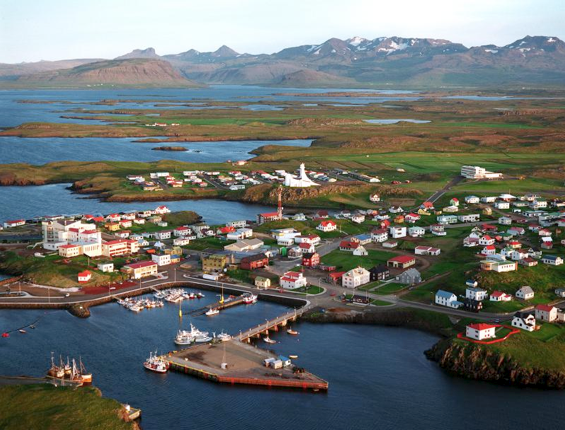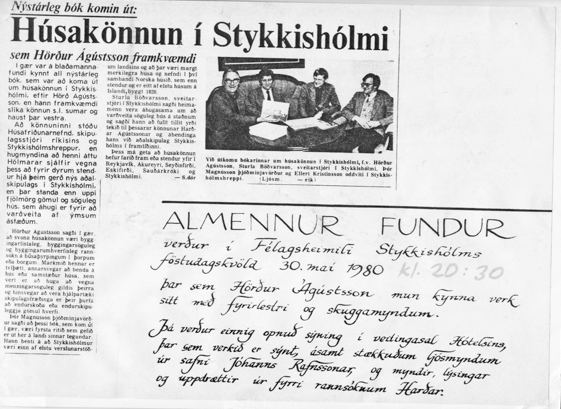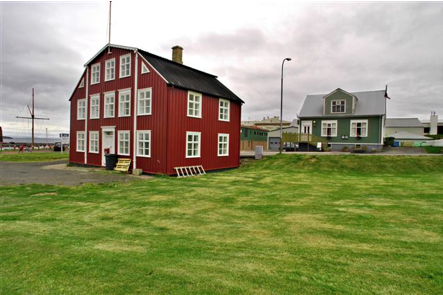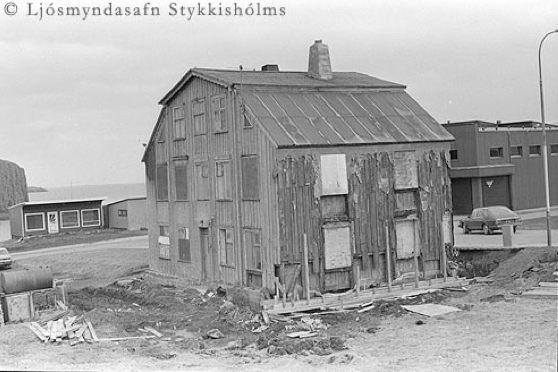The Giant
/Lars Olofsson
In the grand scheme of things, Iceland is an adolescent giant having a nap. Occasionally he changes position and in true teenage spirit, he’s easily annoyed and might spew some lava if he wakes. In the end, he always falls back asleep and sometimes it takes centuries for him to wake again. However, that’s in human years. For a giant, it may just be part of the afternoon.
On a freezing, bleak afternoon that seemed to be evening I drove through the pale lands. The shadows reached far across the icy grounds and hardly anything bore any other colours than grey and bright white. Occasionally darker shapes ascended out of the smooth, powdery drifts. Black and rough built of stiffened lava. Barely any other vehicles on the road made for an easy going drive. The car felt as a warm knife cutting through lard, hurtling on the black tarmac. A slight noise from the tires evoked of rain on a tin roof. The sound, the soft landscape and the dull hum from the engine created a journey that soothed a brittle city soul.
Quiet scatterings of wooden buildings clad the archipelago in random expression. The old fishing village Stykkishólmur, made for a peaceful journey’s end. The town seemed shut for hibernation. Perhaps a naive impression. Beneath the bleak surface there are always a wealth of people to warm you with their calm yet eccentric personalities.
One restaurant open for two hours each evening was perfect for an indecisive mind. No options makes an effortless existence. The dish selection was small so the simplicity persisted. Dusk happened too quickly to be noticed and on exiting the restaurant it was darker than expected. The sea disappeared behind a navy shroud and each street light created a refuge from the winter shade.
The laid back, ginger bearded man at the hotel reception offered rum fuelled hot chocolates and enthusiastic conversation. He made the night disappear and sleep was delayed. Eventually, the beds beacon grew too alluring, like a lighthouse that blinded ones eyes with tire.
Something stirred me in the middle of the night. A sense of an electric current streamed through my flesh with strength enough to awaken me. A grainy aura from the clock radio was all that could be made out. The darkness of the night encased like a deep blue cloud. Even though there weren’t any need the curtains were fully drawn. I staggered to the window and quietly drew the curtain to its side and gasped at the sight. Stykkisholmur was green, bright emerald green and the sky were licked by long serpent tongues of northern lights. They playfully teased the few clouds that were drifting across in a colour spiel of deep blue, poisonous green with thin edges of pale, powdery pinks. I grabbed a thick woolen blanket and wore it like cloak, stabbed my boots with bare feet and rushed downstairs as quietly and quickly as possible. No one was awake, it was early morning and as I grabbed the handle of the front door a hum could be heard, amplified by the touch.
The snow gave way beneath the thick soles of my boots with a sound that brought me back to making snowballs as a child, compacting them with my wet woolen mittens into small, dangerous balls. Out there, in front of the hotel, the light strands seemed even fiercer as they disentangled with slow motion strokes.
I marvelled at the display that seemed bespoke. The humming noise was numbing and the biting cold that was slipping in under the blanket was barely noticed. In a daze like trance I tried to reach the lights and touch them. The blanket fell off and I stood there naked. Being Scandinavian this normally doesn't cause any bother but this time it wasn’t even registered. My pale skin seemed to absorb the green light, vibrating with the humming sound that filled everything. I reached further and further, extending my arms on tip toes until I realised I was actually growing. Sounds, similar to the noises from the snow beneath my feet, could be heard from my bones, creaking and cracking as they were growing. The boots grew tighter and tighter until they burst in small, quiet eruptions. I was a green giant stretching my growing arms up to the sky like Jack’s beanstalk. Quivering hands could finally touch the lights and they were sliding and travelling around my fingers like slippery eels, greeting me to their residence. I thought that I would rearrange the stars, but instead decided to take a seven mile step out onto the ocean floor. Bare feet dipped into the salty, calm, cold waters. I waded through the sea until I reached the sleepy village of Hellissandur. I nearly pushed their unmissable antenna over with my casually swinging arm. With clumsy fingers I carefully tried to prop it up. It was only slightly bent at the top, hopefully no one would notice. Standing there the humming grew even stronger as fishes gathered around my feet, nibbling skin with tickling bites. The green light was gleaming, it was everywhere and the cold breeze didn't seem to have any strength. In fact my body was warm and throbbing with the light and the hum. Seals and dolphins arrived, having noticed the commotion. My knees creaked as I squatted and I gasped yet again when dipping my bottom in the cool waters. As I let the dolphins jump across my fingers I heard a slight whisper through the subtle yet powerful noise. Saxholl, the four thousand year old volcano, seemed to want attention. I crawled out of the sea and kneeled on the ground beside it. Resting my ear against the mouth of its crater I tried and make out what it said but it seemed to be Icelandic. The more I tried, the more it seemed to make sense. First only an occasional word but eventually I fully understood.
It whispered stories of long gone people and creatures. Beings that lead hard working lives in the cold climate. Beings that starved and froze and lived at a time when death had a more prominent place in life than now. When boats sailed away and people walked out the door and never came back. When they were surprised that their newborn survived and it hurt as much as it does today when it didn't. Tales of crimes that were never punished, murderers that were never caught and beings that were never understood. Women hiding so many secrets they were consumed by their own lies. Men so caught up in their own pride their desolation affected everyone around them.
It also whispered about laughter and fun, witty jokes and stupid pranks. About anticipation, flirtation, lovemaking and good old sex. And of course love and more love. About hunting, fishing, cooking, feeding, eating good food and drinking and singing songs, creating and playing instruments and dancing in the warm, light summer nights. It told tales of love and thankfulness to your ancestors for what they taught and for what they left for you to figure out.
I placed myself on my back beside the crater and by then I think the antenna was kicked into the ocean. I laid there looking at the stars through the green lights. They also seemed to whisper old tales. So many stories were to be told that they filled the ether. The hum continued to hum. And it always will, long after our planet is engulfed by the sun like a rock in a lava stream.
I woke up from the lushest of dreams and just wanted to go back asleep. I stumbled to the window to check if the lights were truly there. A gloomy, grey reality met my eyes and caused my heart to sink. I went back to bed and fell asleep after a good while thinking about the dream, wishing for it, urging it to come back.
The strange mood persisted after I woke. My sunken heart stayed down and it didn’t make any gestures of ascending. The inevitable journey back solidified its position. Although after leaving, sliding through the beautifully bleak landscape, the scenery seemed to have changed. It had become more vibrant and was bursting with contrast.
The soil was still whispering its stories. The earth and the sky exuberated tales about long gone beings that had tough times and laughter and love.
Days are hurtling past him
like the autumn rain
barely kissing his skin
absorbed by the ground
He tries to catch a drop
on his tongue in vain
the rain keeps him standing watching it spellbound
Lars Olofsson







